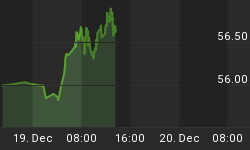Contrary to other studies about the amount of time one should exercise in order to stay healthy, a recent World Health Organization (WHO) report says that only 15 minutes of walking or jogging a steady 0.6 miles each day can extend life expectancy and improve work-related productivity.
Even better, that WHO analysis is being used to now make the case that your 15-minute walks can help boost the global economy.
In fact, according to a report on the economic benefits of a more physically active population, published this week by RAND Europe and the U.K.-based health insurance group Vitality, following those walking guidelines could improve the economy by as much as $100 billion a year.
Overall, those health gains translate into reduced mortality, and the longer people live, the longer they can stay in the workforce, which would grow the overall labor force in addition to economic output.
“Of the global economic gains detailed in the report, 30 percent could be attributed to reduced mortality and reduced sickness and absences, while 70 percent were linked to reduced presenteeism,” Christopher van Stolk, RAND’s executive vice president and co-author of the report said.
In the U.S. alone, productivity fell for the first time in four years during the latest quarter, according to the U.S. Labor Department. The report said that productivity, a measure of economic output for each hour worked, fell 0.3 percent in the third quarter.
However, poor health and lack of exercise are clearly not the only causes of our productivity decline. Related: SoftBank Urges WeWork To Pause IPO Plans
Some economists link America’s trade war with China with productivity, saying that it has discouraged businesses from investing more in productivity-enhancing tools. The tariffs imposed by both countries have raised business’ costs causing decrease expanding and investing.
Also, the 2017 corporate tax cut was announced as a policy to raise productivity. Even though productivity did pick up in the first half of this year, currently is dropping back to the slow growth that has occurred since the Great Recession ended.
And when it comes to workers, recent research shows that due to stress, “toxic workplace behavior,” poor management and burnout, employees are only 60 percent as productive in their workplaces as they could be.
On the other hand, that $100 billion a year that companies could save if workers were in good physical health perhaps pales in comparison to how much they could save if employees were simply … happy.
A 2017 Gallup poll showed that in the U.S. alone, disengaged and dissatisfied employees caused U.S. companies between $450 billion and $550 billion in lost productivity every year. According to the findings, more than 50 percent of all U.S. workers are disengaged at work.
WHO’s 2018 report said that more than a quarter of people worldwide - 1.4 billion - were not doing enough physical exercise, a figure that has barely improved since 2001.
They found that in high-income countries, which include the UK and the U.S., the proportion of inactive people had risen from 32 percent in 2001 to 37 percent in 2016, while in low-income countries it had remained stable at 16 percent. In lower-income countries, people are more likely to be active in their jobs and walk or use public transport.
Less than a quarter of Americans are meeting all national physical activity guidelines, according to a new report from Prevention’s National Center for Health Statistics (NCHS).
Federal physical activity guidelines recommend that adults get at least 150 minutes of exercise each week. Yet, the NCHS reported that only about 23 percent of adults ages 18 to 64 are hitting both of those marks.
By David Craggen for Safehaven.com
More Top Reads From Safehaven.com:
















